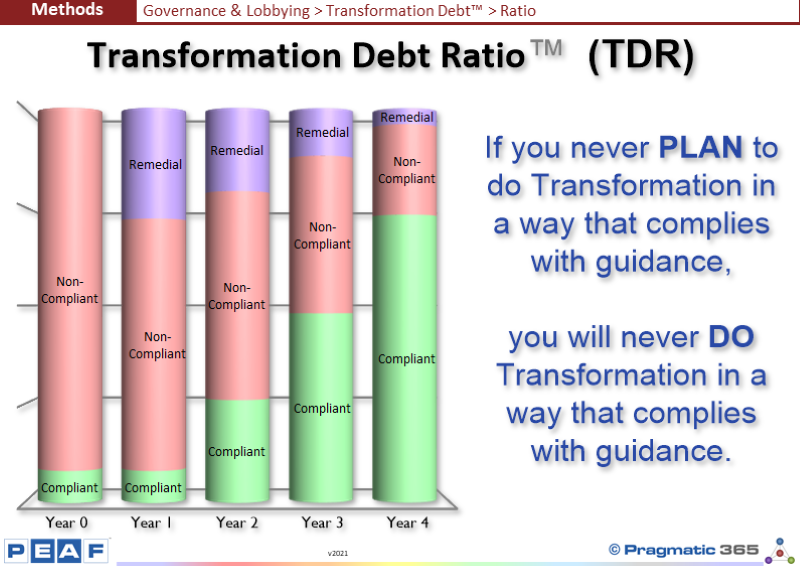
Although Transformation Debt Ratio™
is defined for each project, it can also be combined to produce an TDR for a
group of projects in a program or an overall TDR for the entire Project
Portfolio. Of course, when combining TDR you need to weight each individual TDR
to get a balanced view.
While TDR for the entire Transformation Portfolio provides a
useful metric at a point in time, it is more useful to track it over time. A
sensible view might be that over time, an Enterprise might like to see the
amount of work that is Compliant increase and the amount of work done in a
Non-Compliant way decrease - since doing work in a Compliant way is generally
the most effective, most efficient and least risky manner of doing it.
...to read more, please Login or Register